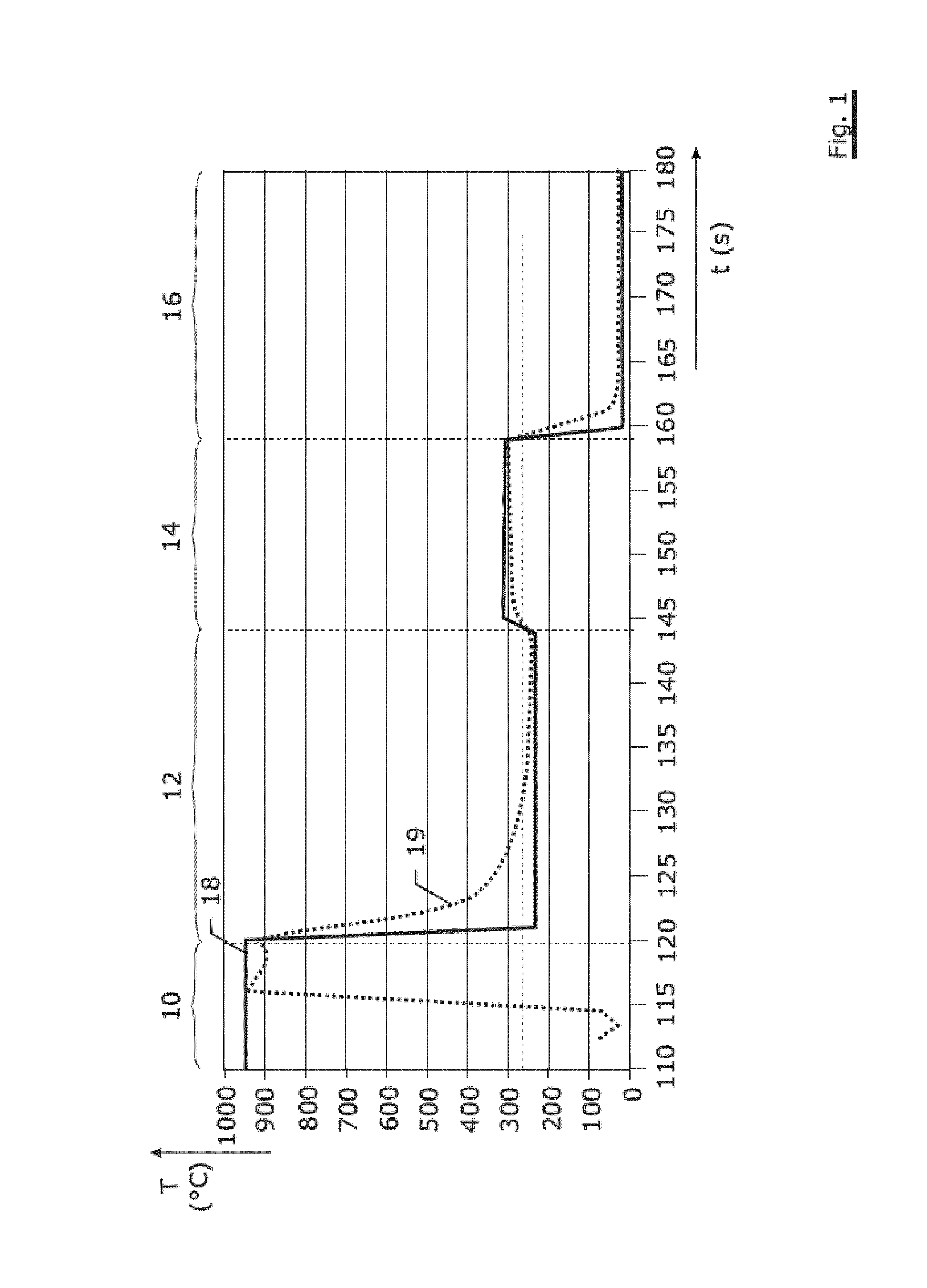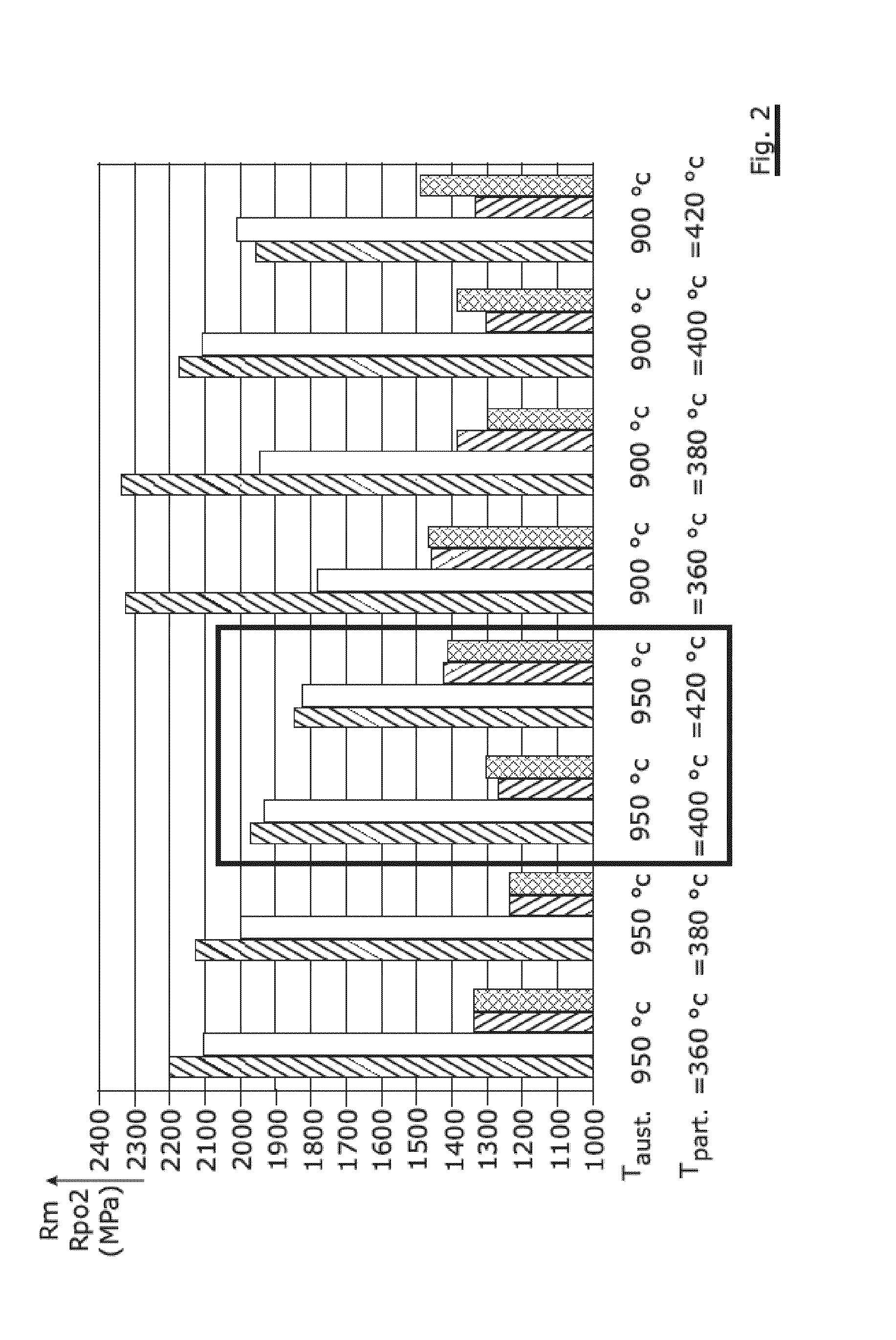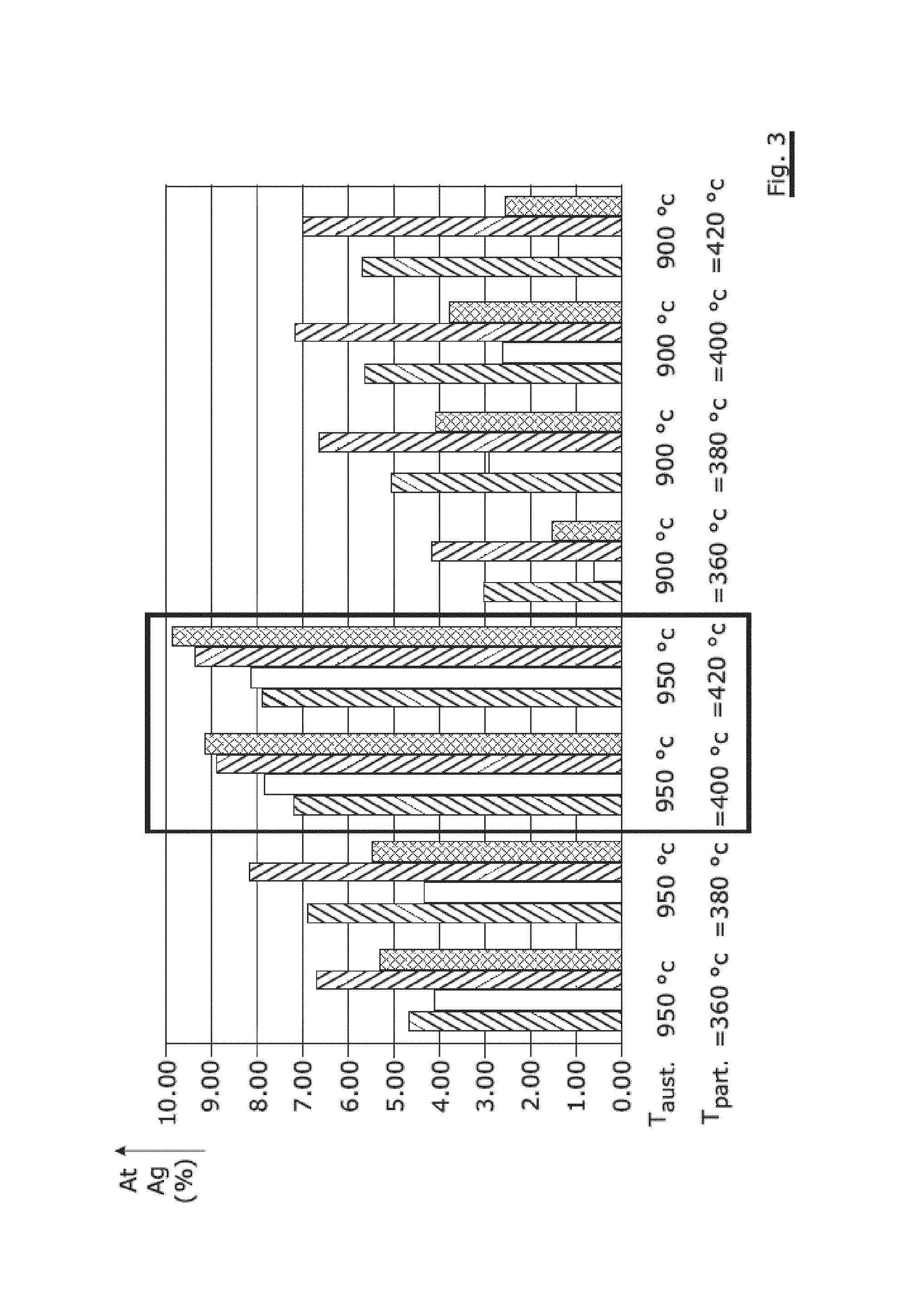Quenched and partitioned high-carbon steel wire
a high-carbon steel wire, partitioned technology, applied in the direction of low internal friction springs, magnetic materials, magnetic bodies, etc., can solve the problems of high cost of steel wires of wo2011/004913, process has not yet been applied to high-carbon steel wires, and the percentage of retained austenite is less, so as to improve the resistance to fracture and damage tolerance, good contact fatigue properties, hardness and ductility
- Summary
- Abstract
- Description
- Claims
- Application Information
AI Technical Summary
Benefits of technology
Problems solved by technology
Method used
Image
Examples
Embodiment Construction
[0062]FIG. 1 illustrates a suitable temperature versus time curve applied to a drawn steel wire with a diameter of 3.60 mm and with following steel composition:[0063]% C=0.55[0064]% Si=1.62[0065]% Mn=0.70[0066]% Cr=0.77
the balance being iron and unavoidable impurities (% S and % P below 0.020 and weight percentages of other elements below 0.10)
[0067]The starting temperature of martensite transformation Ms of this steel is about 280° C. and the temperature Mf, at which martensite formation ends is about 170° C.
[0068]The various steps of the process are as follows:[0069]a first austenitizing step (10) during which the steel wire stays in a furnace at about 950° C. during 120 seconds,[0070]a second quenching step (12) for partial martensite transformation at a temperature below 280° C. during less than 25 seconds;[0071]a third partitioning step (14) for moving carbon atoms from the martensite phase to the austenite phase to stabilize this at a temperature above 300° C. during about 15 ...
PUM
| Property | Measurement | Unit |
|---|---|---|
| Temperature | aaaaa | aaaaa |
| Temperature | aaaaa | aaaaa |
| Temperature | aaaaa | aaaaa |
Abstract
Description
Claims
Application Information
 Login to View More
Login to View More - R&D
- Intellectual Property
- Life Sciences
- Materials
- Tech Scout
- Unparalleled Data Quality
- Higher Quality Content
- 60% Fewer Hallucinations
Browse by: Latest US Patents, China's latest patents, Technical Efficacy Thesaurus, Application Domain, Technology Topic, Popular Technical Reports.
© 2025 PatSnap. All rights reserved.Legal|Privacy policy|Modern Slavery Act Transparency Statement|Sitemap|About US| Contact US: help@patsnap.com



